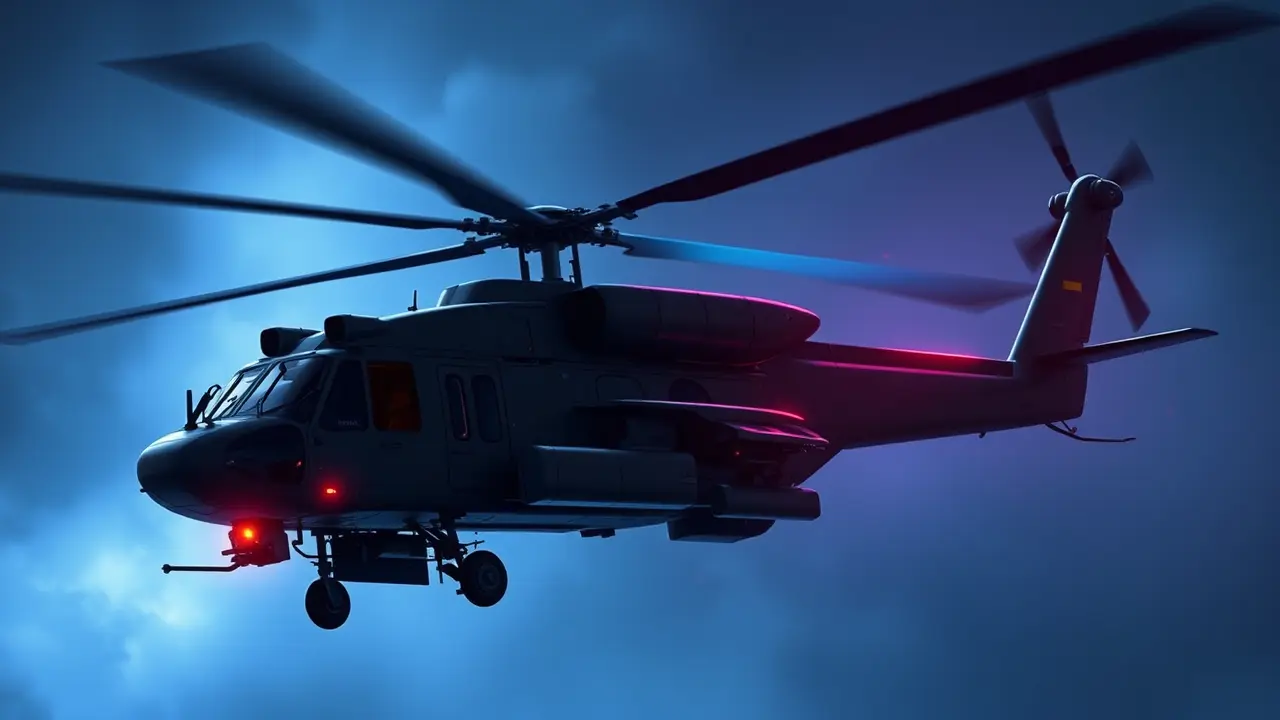China's Z-20T Helicopter Showcases Advanced Capabilities in Public Demo
In a stark, public demonstration of burgeoning aerial prowess, China has thrust its advanced Z-20T assault helicopter into the spotlight at a military exhibition in Tianjin, a move that defense analysts are scrambling to decode. The all-weather aircraft, performing with chilling precision, executed a series of complex manoeuvres—a hover salute, a backward ascent, and a near-vertical climb—before deploying defensive jamming flares in a pyrotechnic display that underscored its combat readiness.This appearance at the 7th China Helicopter Exposition, concluding Sunday, marks only the second major public outing for the type, following a September 3 flyover involving seven aircraft, signaling a rapid progression from ceremonial display to active tactical showcasing. The Z-20T, a heavy-lift utility helicopter bearing an unmistakable resemblance to the American Sikorsky UH-60 Black Hawk, represents a critical linchpin in Beijing's ambitious military modernization drive, aimed at closing a long-standing capability gap in its rotary-wing fleet.For decades, the People's Liberation Army Ground Force Aviation lacked a modern, domestically produced medium-lift helicopter capable of operating in the harsh, high-altitude conditions along China's contentious Himalayan borders, a strategic vulnerability that hampered rapid troop deployment and logistical support. The public debut of the Z-20T, therefore, is not merely an airshow spectacle; it is a calculated geopolitical statement, a signal to regional rivals and global observers alike that China's aerospace industry has achieved a significant milestone in indigenous design and manufacturing, reducing its historical reliance on Russian imports.Military experts point to the specific manoeuvres demonstrated—the backward ascent and vertical climb—as clear indicators of a powerful engine and sophisticated rotor system, capabilities essential for operating in the thin air of the Tibetan Plateau, a region of ongoing friction with India. The deployment of jamming flares, a standard countermeasure against heat-seeking missiles, completes the picture of an aircraft being groomed for high-threat environments, potentially including a contested Taiwan Strait scenario.The timing is provocative, coming amid heightened tensions in the South China Sea and renewed US commitments to allies in the Indo-Pacific. Washington and its partners will be closely analyzing the Z-20T's performance data, assessing its potential to alter the regional balance of power, particularly in amphibious assault and anti-submarine warfare roles for which the platform is likely being adapted.The helicopter's development, shrouded in secrecy for years, mirrors China's broader pattern of 'leapfrog' technological advancement, often involving reverse engineering followed by rapid iteration and improvement. While the public demo showcases capability, it also raises urgent questions about the pace of its deployment. How many squadrons are operational? What is the true extent of its avionics and weapons integration? The answers to these questions will define the next chapter of military calculus in Asia, as the Z-20T evolves from a showpiece in Tianjin to a potent fixture in the PLA's order of battle.
It’s quiet here...Start the conversation by leaving the first comment.
